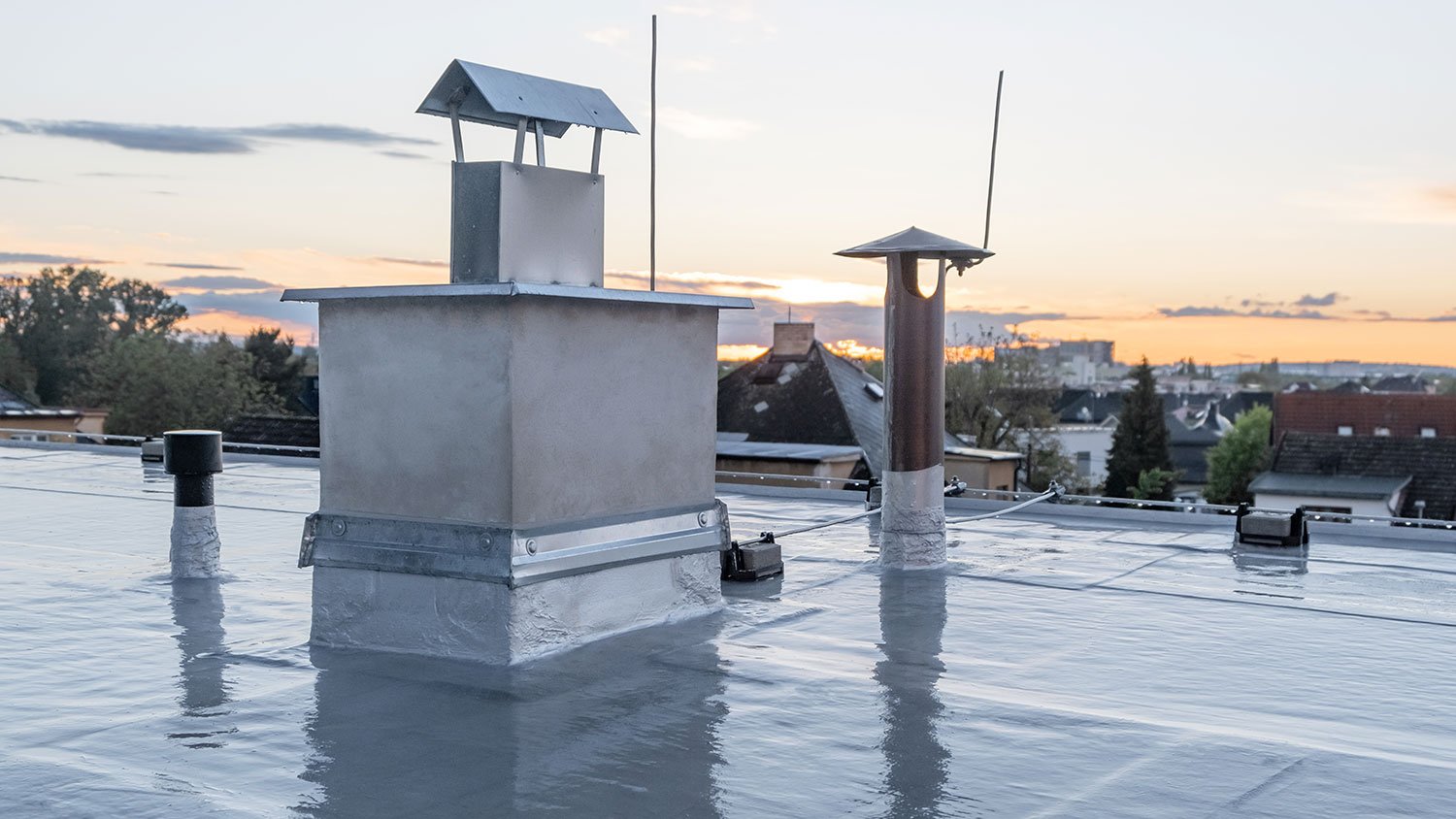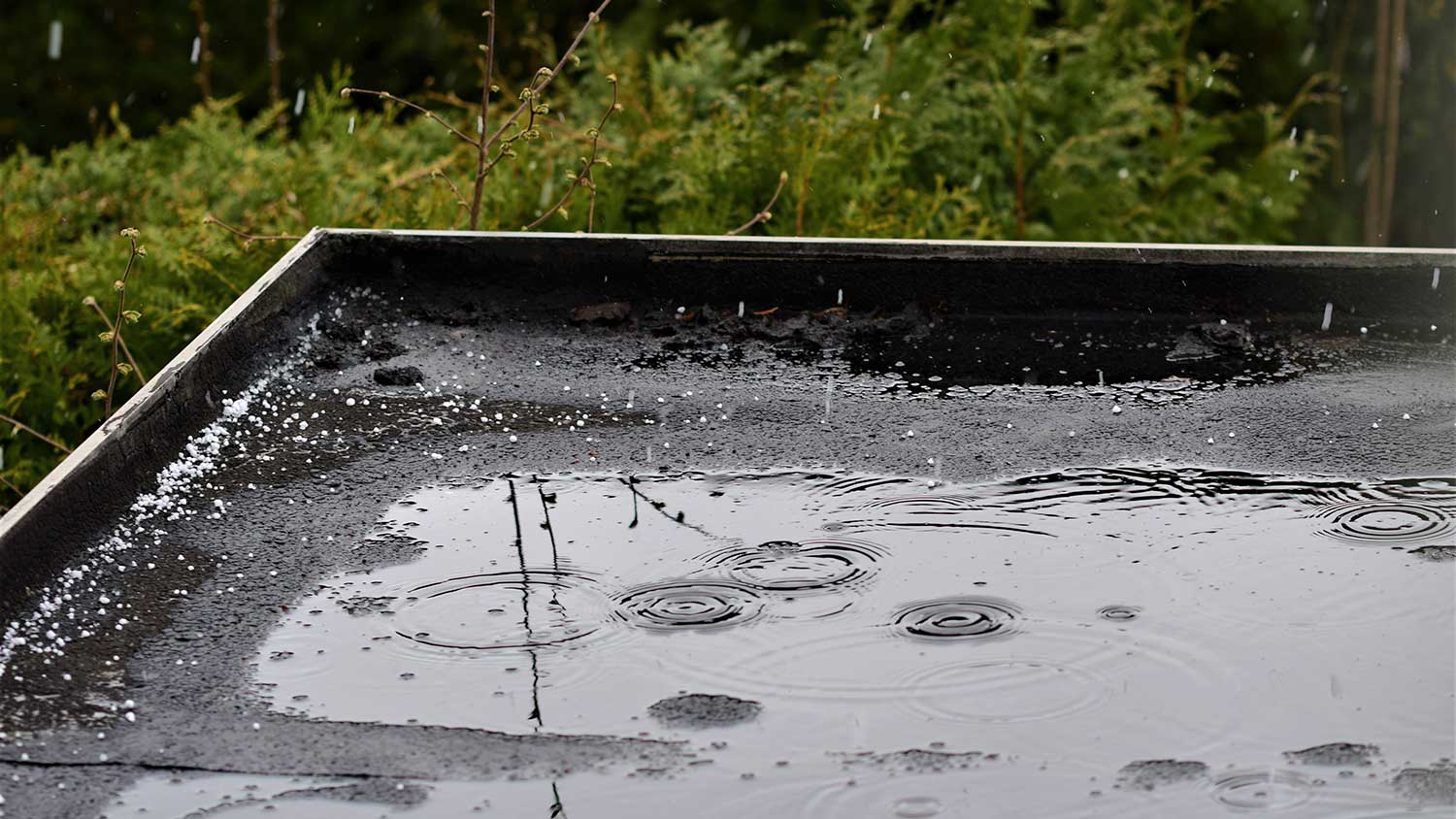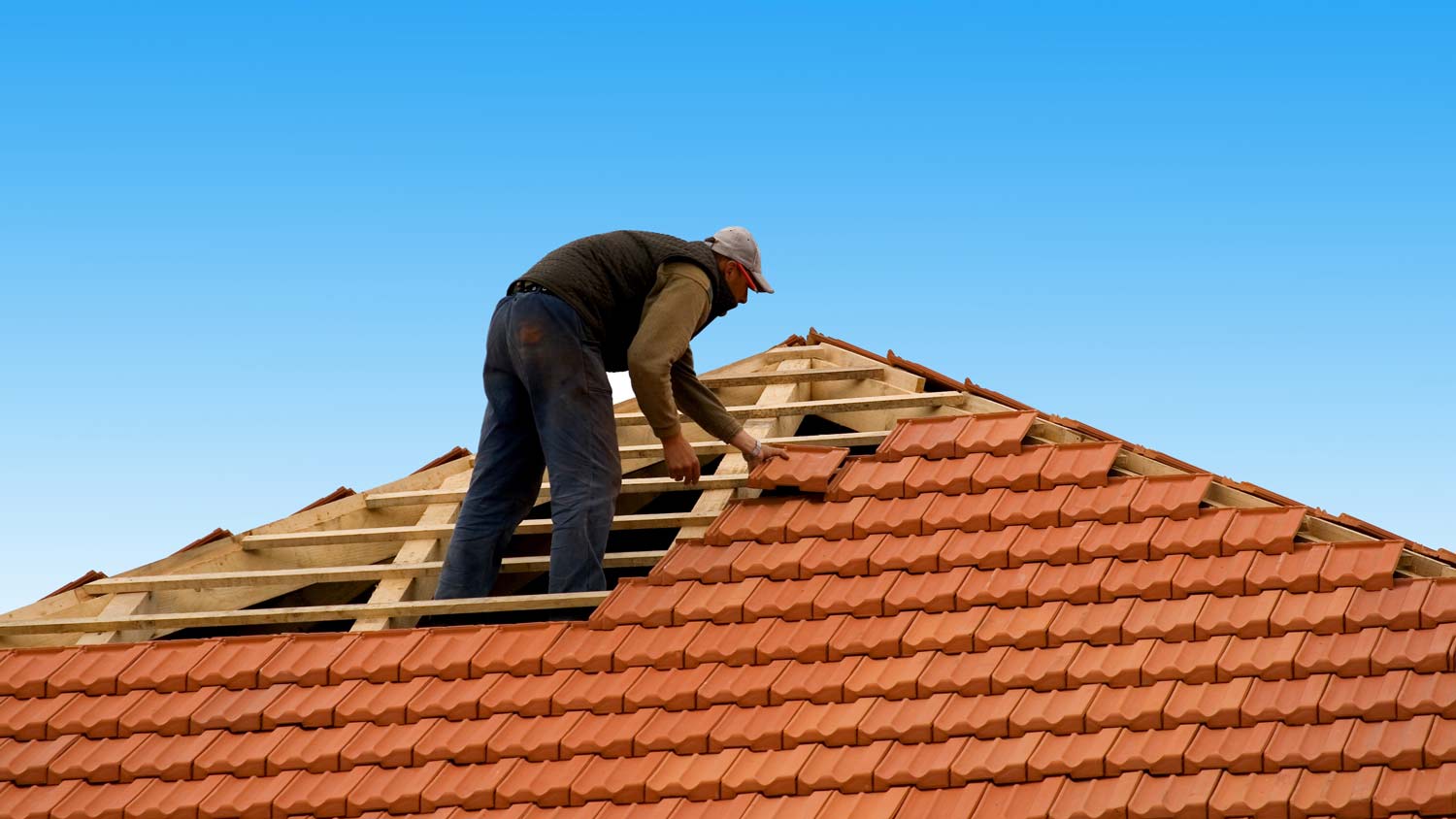
Soffit replacement costs depend on multiple factors, like length, accessibility, and material. Learn about the cost factors to budget more accurately.
Flat-out irritated over a leaky roof? Keep the elements outside where they belong


Finding leaks on a flat roof is difficult because the water does not run in a specific direction like on a sloped roof. Looking at the spot directly above a wet or soft spot on the ceiling will not necessarily lead to the leak either. Knowing how to find a leak in a flat roof is the key to keeping your roof intact and to prevent unnecessary damage inside your home.
Roof leaks can be tricky to find, but knowing how to find a leak in a flat roof is a specialized skill. Just because you see water on your ceiling does not mean the leak is directly above, even in flat-roofed structures. In a sloped roof, water only runs one way—down. But since water always follows the path of least resistance, any deviation in a flat roof causes water to run. That might be low spots or trusses, or even electrical or ventilation equipment. Water can run in any direction in a flat-roofed structure, making it a little more difficult to find the source of a leak. To suss out where your flat roof is leaking, follow these ten steps and you will be high and dry in no time.
Clear your roof of all leaves, sticks, and other debris with a leaf blower or push broom. Debris could be covering problem spots on the roof, and ensuring a clear surface will make your leak hunt easier.
Finding a wet or soft spot in your ceiling is a sign there is a water leak somewhere. While it might not lead directly to the leak, it helps identify the general area to start searching for the culprit. This may cut down the time it takes to find the leak, allowing you to get the necessary repairs faster.

Roof flashing is a material made of metal strips that cover gaps between the roof and chimneys, skylights, or other elements that require cutting a hole in the roof. Flashing is generally in two layers; an inner layer covers the wooden sub-roof material and an outer layer serves as secondary protection. Over time, flashing can become damaged, rusted, or separated due to expansion and constriction of roof materials and may allow water to seep through the cracks.
Any place where two sections of roofing come together will have a seam. Sometimes these seams spread apart, leaving space for water to enter the structure. Likewise, the collars surrounding plumbing exhaust pipes that exit the roof can become dislodged or damaged and leave open spaces between the pipe and the roof.
If the roof has leaked in the past, the patching material used to repair the flat roof leak might have degraded, allowing the source of an old leak to open back up to the elements.
Rusty, clogged, or broken gutters are a good indication of a roof leak. If water does not have proper drainage, it pools on the roof. Flat roofs can only withstand so much weight, which can lead to a sagging roof that gives way to water inside the home. Check the gutters to ensure they are in good condition and, if clogged, consider a roof inspection to determine if your roof has leaks.

Low spots in the roof allow water to sit in puddles. If water stands on a roof for more than 48 hours, the roofing material can begin to degrade. If this happens repeatedly, the roofing material may degrade to the point that a leak forms.
If you happen to have a thermal camera or know someone who does, this is a quick way to determine if you have a roof leak. Using the camera inside your home, you can detect if there are areas showing up at a different temperature than the rest of your ceilings and walls. If you do not have a thermal camera, consider hiring a roofing professional near you to use their high-tech equipment to detect it.
Mold is often a sign of a leaking roof. If you notice mold in the upper level or the exterior of your home or building, it may be due to a leaking roof. The mold may not be where the leak is, but it can lead you to the general vicinity and alert you to a potential leak that needs repair.
With a water hose, wet down any questionable areas of the roof and check to see if the area of water damage inside is showing activity. If you are still unable to find the source of the leak, systematically wet sections of the roof one at a time and check for evidence of water inside. This step could take up to several hours, depending on the size of the roof.
Check your warranty.
Avoid DIY repairs because they could void your warranty.
Contact a local roofing repair specialist.
Rectify any water damage.
Once you have located the source of your leak, or if you are unable to find the source, you should call the roofing professionals who installed it. If it has been less than 20 years since they installed it, your warranty may cover the repair. But if you attempt the flat roof leak repair yourself, the warranty might be voided. Most flat roofs have warranties from 12 to 20 years. Because of ponding water, these types of roofs generally do not last as long as sloped roofs. Most contractors have a workmanship warranty of one to five years. If your roof is past that, it is probably not going to be under warranty for workmanship. It might still be under warranty for the manufacturer if the material did not perform properly or has a manufacturer defect.
Roofing repairs are fairly specialized, and the materials used in many flat roofs require special tools to fix. Check your roofing company or a different company if your warranty is no longer valid to see your options for repair. Restore any water damage quickly to avoid developing mold, mildew, or rot.
From average costs to expert advice, get all the answers you need to get your job done.

Soffit replacement costs depend on multiple factors, like length, accessibility, and material. Learn about the cost factors to budget more accurately.

Find out average roof shingle repair costs, factors affecting pricing, such as material and labor, and how to save on your next roof repair project.

Thatched roofs add tons of old-world charm to your home and provide outstanding insulation. Learn about thatched roof costs and what affects your final price.

Find out the average tile roof repair cost, key price factors, and ways to save. Get expert tips to plan your tile roof repair project with confidence.

Dormer additions are both stylish and practical. Check out how to increase your attic's living space while boosting your home's curb appeal.

What's a cupola? Is it possible to have one on my home? What do they look like? Learn all about the variety of cupolas you can add to your home or barn.